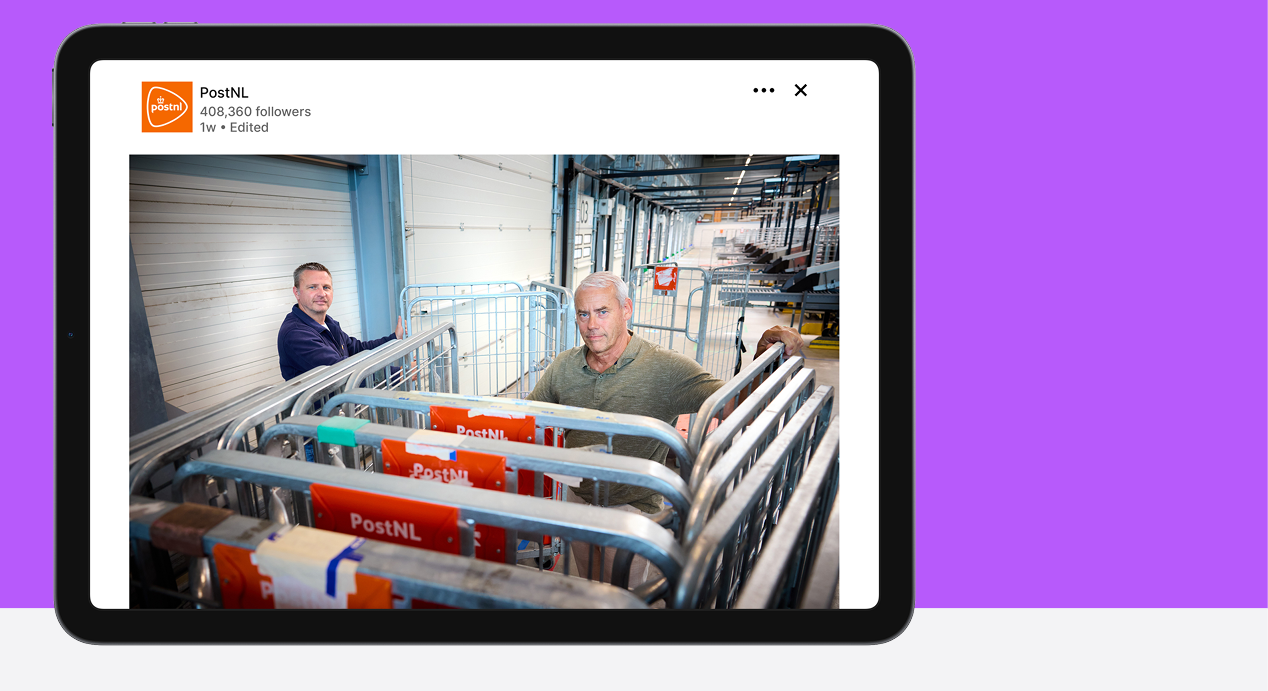Liveability
As a company that is present in urban areas every day, we are acutely aware of the effects our operations can have on the liveability of the environments we serve. Increasing urban congestion, air pollution, and noise pollution are growing concerns, particularly in densely populated cities. At PostNL, we are committed to addressing these challenges through sustainable practices, recognising that a healthy, liveable environment is essential for the well-being of people and the vitality of communities.
We believe a liveable environment is one where people can live, work, and move freely without being adversely affected by air and noise pollution. By reducing our negative impact on air quality, reducing noise, and supporting local biodiversity, we play an important role in making cities more sustainable and enjoyable places to live.
Nitrogen and particulate matter
To mitigate our environmental impact, we are actively transitioning to electric vehicles across our fleet. Electric vehicles are quieter and release zero particulate matter and nitrogen emissions from the combustion of fuel, key pollutants that affect air quality.
One of our ambitions is to achieve zero-emission delivery in the last-mile—the stage where parcels and letters are delivered from the sorting centre to the recipient. By 2030, we are committed to ensuring that all deliveries are emission-free. As a key milestone, we already deliver with zero emissions in 27 city centres where zero-emission zones are in place, and we continue to expand our zero-emission network. This represents a significant step toward not only reducing our environmental impact but also contributing to healthier, quieter, and more liveable cities for society
Out-of-home to improve network efficiency
The increasing volume of parcels being ordered and sent means recipients are not always home to receive them. To address this, we are rapidly expanding our OOH delivery network across the Benelux, which helps reduce the environmental impact of e-commerce by improving network efficiency and increasing first-time-right delivery, which acts as a decarbonisation lever. At the same time, it offers consumers greater flexibility and convenience.
By providing a wide array of APLs and retail locations, our OOH network enables consumers to collect their parcels at a time and place that suits their schedule. This contributes to reduced congestion in last-mile delivery routes, resulting in a less polluting logistics chain. It also minimises the risk of missed deliveries and reduces waiting times, contributing to a seamless customer experience. In 2024, we grew the number of APLs to around 1,100, and we intend to further develop our OOH delivery strategy by expanding the APL network, which will also contribute to greater customer satisfaction.
City-friendly delivery in inner cities
As urban congestion increases, we have expanded our focus from emission-free delivery to include minimising disruption. One example is increasing the use of light electric freight vehicles (LEFVs), which in 2024 we introduced in Amsterdam and Leiden. These vehicles, alongside the growing numbers of e-bikes and e-vehicles we use, is helping us reach our goal of emission-free delivery.
As well as being emission-free and quiet, LEFVs are also narrow and manoeuvrable, resulting in reduced congestion compared to vans. They also use less electricity than electric vans, and can carry up to three roll containers that can be smart-packed at the sorting centre and loaded directly onto the vehicle at the city hub. We aim to continue introducing LEFVs at other cities.
Smarter use of lorries
Rob Ruikes, a transport process manager at PostNL, identified an inefficiency in our logistics operations: some lorries were operating at just 20% capacity. “These were the vehicles transporting mail from parcel sorting centres to letter sorting centres. Empty roll containers were often taking up valuable space at the parcel centres and were being transported separately to letter sorting centres. At the same time, the mail lorries were underutilised,” he explains. Recognising an opportunity to streamline the process, Rob proposed a simple yet effective solution: filling unused lorry space with empty roll containers.
Trials conducted in Den Hoorn, Zwolle, and Breda confirmed the idea’s effectiveness. “The feedback from staff was overwhelmingly positive, as it freed up workspace at the parcel sorting centres,” Rob adds. Since summer 2024, we have implemented this method nationwide, delivering significant cost savings while reducing our carbon footprint by eliminating unnecessary journeys. This is how we are making our operations smarter and more sustainable.
Environmental management system
Our environmental management systems help us to continuously improve our environmental performance and management across the company. In 2024, 98% of our PostNL employees (in headcount) worked in ISO14001-certified locations (2023: 98%). To the best of our knowledge, we had no environmental incident and therefore did not incur any fines in 2024, which was the same in prior years. This underscores the effectiveness of our environmental management system.
“We are keenly aware of the significant role we play in the world around us”


